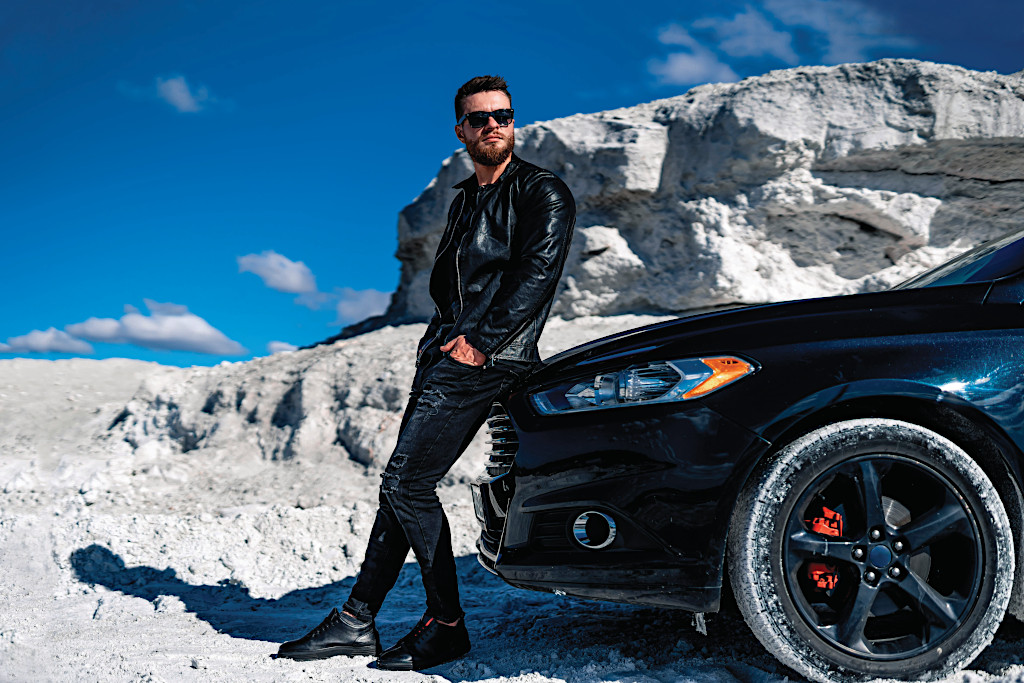I cross the border into southern Nevada and proceed up HWY 95, essentially tracing the western side of the Silver State with my rental car. Along the way I stop at Ash Meadows Wildlife Preserve, a desert oasis with an astonishing claim to fame: Ash Meadows is home to the one of the most critically endangered species on earth, the Devil’s Hole pupfish, whose current numbers are only in the low 100s (though they are not visible to visitors).
If you can imagine Route 66 icon Cadillac Ranch on steroids, you can begin to conjure The International Car Forest of the Last Church in Goldfield, a large-scale art project consisting of dozens of junkyard vehicles stacked on top of one another in some instances and slanted precariously like dominoes in others. There’s no apparent rhyme or reason to the way they are littered across the landscape like picked over trash, but these graffiti-covered lemons glow like precious gems against the setting sun and I eat up space on my camera photographing them all.

The Clown Motel
Photo: Jason A. Heidemann
I’m completely worn out when I reach Tonopah, a town of 2,500 people that survived the ruin of so many of its boom-and-bust counterparts thanks to it being an ideal stopover between Vegas and Reno, and one of just a few signs of human life between the two cities. These days, a night’s rest at one of its legendary hotels is the town’s biggest claim to fame. There’s the historic Mitzpah Hotel, which at five stories towers visibly over the rest of the town, and until 1927 it was one of the two tallest buildings in Nevada. There’s also The World Famous Clown Motel, a budget lodging submerged in grinning clown memorabilia. Both hotels are allegedly haunted, though no spectral being rattled its chains during my stay at the Mitzpah.
Outdoor tables are in abundance at the Tonopah Brewing Company, where I enjoy barbecued slow-smoked pork, green beans and mac ‘n’ cheese before calling it a night.
In 1986, LIFE magazine named the Nevada stretch of transcontinental Hwy 50 “The Loneliest Road in America” thanks to its supreme desolation. But clearly, the editors had never driven Hwy 6 which also bisects the state and is even more stark. I am truly daunted when I see a sign reading “163 miles to next services.” I don’t even want to imagine the peril should my car break down. At one point, I pull over to pee, my stream of urine the only sound puncturing the desert silence.
After 2.5 hours of driving terrain so spartan I can count the number of cars I pass on two hands, Ely, Nevada, (pop. 4,000) feels like its thrumming with human activity. A tourist town, Ely provides quick access to Great Basin National Park, ones of the most remote and thus least visited National Parks in the country, and a must see if you’re a Parks junkie. It’s also home to Ward Charcoal Ovens State Historic Park, where a sextet of oversized furnaces constructed in the 1800s for mining purposes symmetrically line the desert floor like tubby Rockettes.
It’s worth wading through a sea of garish Trump-Pence yard signs to reach McGill, an itty-bitty frontier town artfully framed by the Schell Creek Range. In 1979, the town’s drugstore closed suddenly and was quickly forgotten. Because nobody bothered to clear out the merch, the store reopened decades later as the McGill Drugstore Museum, a pharmacy frozen perfectly in time. Aside from the accumulated dust, all products remain intact and untouched since the Carter administration.


